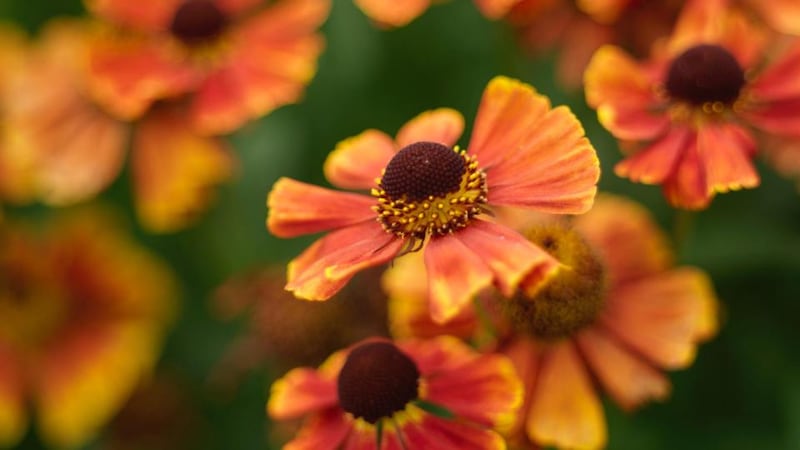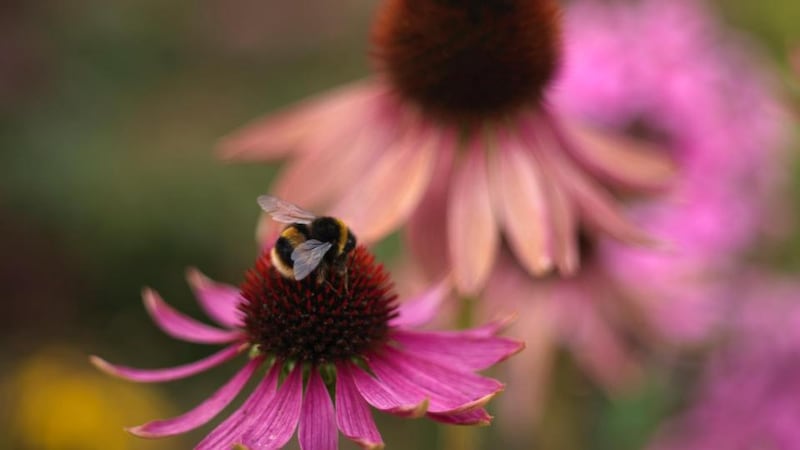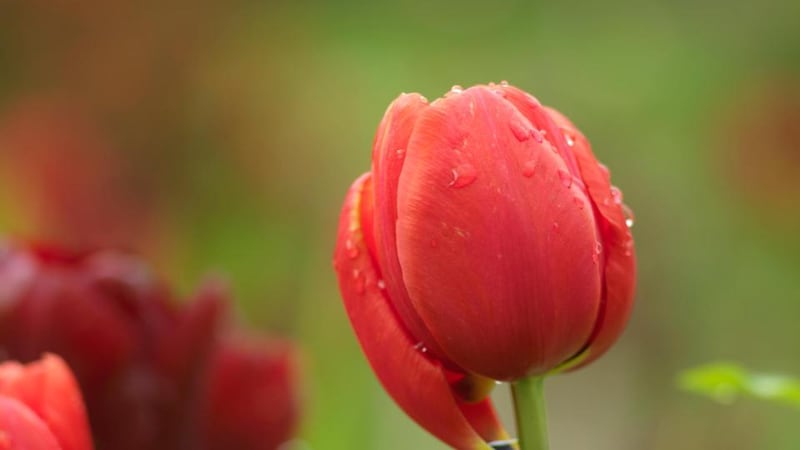Ever heard of the Chelsea Chop? No, it doesn’t refer to some obscure form of martial arts, nor is it the name of the latest must-have hairstyle or some kind of chichi London charcuterie. Instead this is the term used to describe a clever horticultural pruning technique employed by many gardeners as a means of keeping herbaceous perennial plants compact, bushy and self-supporting as well as extending/staggering their flowering season. Typically carried out in late May, it has earned its name by virtue of the fact that its timing coincides with the annual Chelsea Flower Show.
Many kinds of herbaceous perennials are suitable candidates for this horticultural haircut, especially the taller, later-flowering kinds including asters, eupatorium, coreopsis, echinacea, helenium, anthemis, sedum, veronicastrum, phlox, penstemon, echinacea, achillea and solidago. While there are various versions of the standard technique, the usual practice is simply to cut back a plant’s developing flower stems by between third and a half (the taller the variety the more you can cut it back), using either a sharp secateurs or garden shears to trim neatly back to a bud.

It may seem a little savage, but this sort of judicious pruning helps to delay the onset of flowering as well as promoting the production of plenty of new, somewhat shorter flowering stems, albeit with slightly smaller flowers. So if you’re the owner of a small garden where growing space is precious and every plant really needs to earn its keep, the Chelsea Chop makes a whole lot of sense.
Tweaked method
Some gardeners cleverly tweak the method to suit a particular planting scheme. If, for example, you’re growing a large number of one particular species/variety, then it’s worth considering cutting only half of these plants back so that some of them flower when nature intended, while the rest come into bloom some weeks later. Pruned in this way, together they’ll give a far more prolonged display.
Others gardeners choose to cut back only a certain amount of any individual plant’s flowering stems – usually about a third – with similar results in terms of encouraging it to bloom in relays. But if you plan on doing the latter, then a gentle note of caution . . . do make sure to deadhead the earliest flower stems as they begin to fade in order to prevent the plant putting all of its energies into setting seed rather than producing new flowering stems. This, after all, is the very reason why it flowered in the first place.

It’s also important to time the process correctly. Too late and your plants will no longer be in vigorous enough growth to recover sufficiently to flower. But by pruning them early enough – a full month before the summer equinox and even earlier in especially mild gardens – you’re cutting them back at a time when the plants are still pouring all of their energies into fresh new growth and while both soil moisture and light levels are still high.
If the weather is warm and sunny, it’s also best to carry out your Chelsea Chop-ping in the evening in order to give the plants the best chance of quickly recovering. And if you’re carrying out the Chelsea Chop during a dry spell, then a generous watering to the roots before pruning will also help the plants to recover. But avoid drenching the foliage in water as this may cause problems with disease down the line. For the same reason, whatever version of the Chelsea Chop you employ, it’s also important to remove all of the freshly pruned plant material to add to the compost heap, rather than leaving it lying around the base of the plant to decay.
Most suitable
Bear in mind also that while it can produce wonderful results, the Chelsea Chop is not suitable for all species of herbaceous perennials. Those kinds that flower only once (rather than being repeat-flowering kinds) won’t respond well to this method. Examples include peonies and aquilegia. With others – examples include delphiniums, aconitum, foxgloves, lupins, verbascum, astrantia – it’s best to follow a gentler approach. In this case, allow the plants to flower as normal and then simply cut back individual faded flower stems to the nearest lateral bud/leaf. Only after all flowers have bloomed and faded should you follow this by then cutting the plant back to its basal foliage (the botanical term used to describe the leaves that form a cluster of foliage at the base of the plant). Other plants – perennial geraniums, nepeta, alchemilla, hemerocallis, lamium, lythrum, papaver – don’t object to being cut back hard as soon as their first flush flowers have faded in order to encourage the production of fresh new foliage and/or a second later flush of blooms. A generous liquid feed (see last week’s article) and a light top-dressing of garden compost after pruning/deadheading will also help these plants to perform at their best. In short, and to paraphrase Shakespeare, it’s not so much a question of “to chop or not to chop”, but rather a question of “how much?” and “when?”
THIS WEEK IN THE GARDEN
Deadhead faded tulip flowers and then give the ground around these bulbous plants a top-dressing with a general purpose organic fertiliser such as fish, blood and bone meal (available from good garden centres) or OSMO (available from whitesagri.ie). This will help the bulbs to fatten up and greatly increase the chances of them putting on a good flowering display next spring. For the same reason, it’s also important to resist the temptation to cut away the yellowing foliage and instead allow it to naturally die away over the coming weeks.

Now is a good time to plant out dahlias and chrysanthemums for a wonderful late summer/autumn display of colour. Tender bedding plants such as pelargomiums, argyranthemums, nemesia and clarkia can also be safely planted out. Always make sure to harden out plants before transplanting into their final positions outdoors, to water well immediately after planting and to take careful precautions against slugs.
Earth up young potato plants by pulling soil up and around the necks of the young stems, but taking care not to damage them. Not only does “earthing up” encourage the production of a bigger potato harvest, it also helps to control weeds and protects the tasty tubers from blight as well as from being accidentally exposed to sunlight which turns them green and makes them unsafe to eat.
DATES FOR YOUR DIARY
Thursday, May 25th, (2pm), Visitor Centre, The National Botanic Gardens, Glasnevin: Spiders, Bees and Helleborine; Irish Orchids in the Burren and Beyond, a lecture by author, orchid specialist, glasshouse foreman of the National Botanic gardens and recent recipient of the RHS Westonbirt Orchid Medal Brendan Sayers.
Friday May 26th-Sunday May 28th, Cork Racecourse, Mallow, Co Cork: Mallow Home & Garden Festival. It will include show gardens, displays floral arrangements and an ISNA Plant Fair. See exhibitionsireland.ie and irishspecialistnurseriesassociation.com;
Continuing until mid-June, The City is My Garden: an art installation created by Dublin-born visual artist Maser in collaboration with Arnotts and the National Botanic Gardens, Glasnevin. See maserart.com and arnotts.ie












